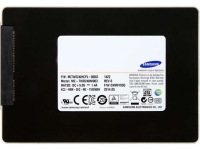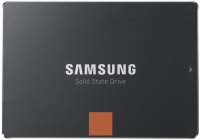SSD Samsung series EVO (high efficiency TLC)
prices on 13 modelsSamsung EVO series (TLC, 3D TLC)
Samsung's Evo series includes fairly expensive, high-quality, reliable and record-breaking SSDs that leave the competition behind on all fronts, whether it's technological innovations, speed measurements or the degree of reliability of the drive. For the sake of this leadership, the Korean giant has organized a completely closed production cycle, when memory chips, control controllers, and assembly take place at Samsung's own factory. Thanks to this, over the years, literally every new SSD in the Samsung EVO line has become the yardstick by which everyone else is judged.
 |
However, given the fact that the market is filled with fast, well-made and at the same time affordable drives, Samsung is thinking about reducing the cost of production so that the EVO series is, so to speak, closer to the people. So, in the EVO 980 PRO model, instead of MLC memory, the familiar TLC NAND appeared for everyone, they also abandoned the DRAM buffer and support for the fourth generation PCI-E bus. Because of this, the lead in terms of performance remains with the 970 EVO Plus, which was released back in early 2019. It is built on the basis of 3-bit MLC-memory, operates under the control of the Samsung Phoenix controller and is capable of providing data transfer at speeds up to 3500 MB / s.
The EVO range is divided into two groups. The first includes classic SSDs connected via the SATA bus, the second includes faster and more modern M.2 NVMe drives that interact directly with the system via the PCI-E bus, not limited to SATA speeds. And if a couple of years ago it seemed that the first group would soon come to an end, then in 2021 we see that Samsung is developing precisely the affordable SATA direction. At least the most current model in this family is the 2021 Samsung 870 EVO drive. When designing it, the company decided to experiment with TLC 3D V-NAND memory and Turbo Write combined SLC caching technology, thanks to which the drive is practically not subject to speed drops.









